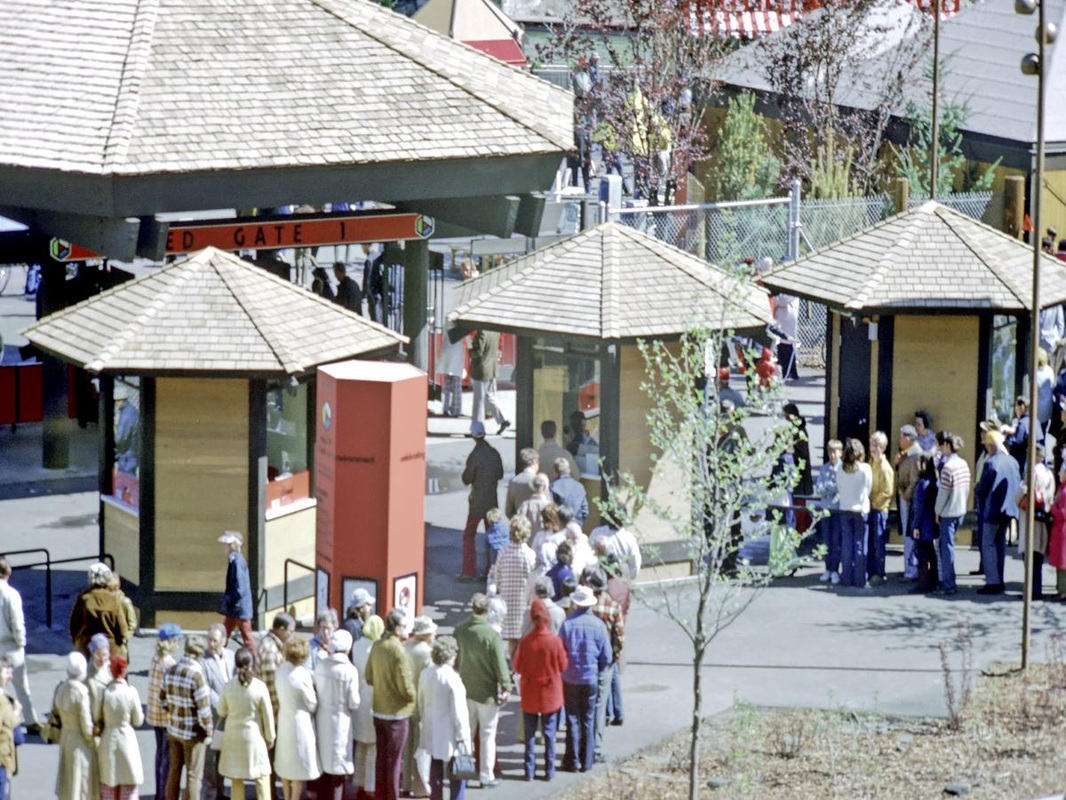|
J. William T. "Bill" Youngs, The Fair and the Falls: Spokane’s Expo ’74: Transforming an American Environment, Chapter Sixteen
|
"Expo Opening Day" courtesy of the Washington State Archives
|
Chapter Sixteen: Opening Day
|
SummaryExpo staffers were scrambling up to the last minute to get the fair ready for opening day. It was close, but everything was finally ready when the gates opened on May 4. The opening day ceremonies were attended by numerous dignitaries, including President Richard Nixon, who was the target of protesters.
|
Author reads from the Text
"A mad scramble"
"A U.S. Pavilion employee remembered his doubts about the possibility of finishing the pavilion on time: 'I just remember it was a mad scramble to get it all put together. If I had $100,000 and somebody wanted to bet me that we would be open on time and ready to go, I would have bet the whole $100,000 that we would have never opened on time. But in the last two days of the scramble, they pulled it off; and, in fact, in the last hour before we opened the doors, miracles happened.'"
"The Expo Credo"
The Expo Credo, which was read by Danny Kaye on opening day, began:
"We believe that the universe is a grand design in which man and nature are one.
"That planet earth, a small part of the universe, is the residence of mortal man whose needs and aspirations are limited by the finite resources of planet earth and man's own finite existence.
"That man is the custodian of his environment as the environment is the custodian of man."
"We believe that the universe is a grand design in which man and nature are one.
"That planet earth, a small part of the universe, is the residence of mortal man whose needs and aspirations are limited by the finite resources of planet earth and man's own finite existence.
"That man is the custodian of his environment as the environment is the custodian of man."
"Demonstrations against Nixon"
Rik Smith recalled, "When Nixon came out, there were people around me yelling at him -- everybody's yelling at him, and flipping him off. I can remember Nixon coming out of there with this real disgusted look on his face. And I really thought we'd been successful because of that. As it turned out, it was one of the last demonstrations against Nixon."
"Like watching a silent film"
"Sauntering through the fairgrounds, King Cole was struck by the fact that at first almost everyone was silent: 'There was no noise, no sound. Everybody was absolutely quiet, nobody was talking. It was like watching a silent film of a very noisy thing, because you could see all these people jammed together, running around. You could see the spectacle, but there was absolutely no sound, and I stopped one family after another -- asked them why they weren't talking. They all said the same thing: 'Who can talk? We've got to look!'"

